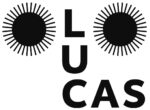Short Film Program for »Minis«
Short Film Program for »Minis«
The »Minis« film program at LUCAS is something very special this year: Children from the second grade of the Grüne Soße daycare center put together their own program. They choose films from the Cinemini Europe film catalog. This is a European film education project for children aged three to six.
In a workshop with film educator Nils Brunschede, the children themselves decide which films to share with the audience, what title to give the program and which accompanying activity units will take place in the cinema. There are many different films in the Cinemini catalog: experimental, old and animated films. They were not made especially for children, but were selected especially for children.
Nils Brunschede will host the Cinemini program on Festival Sunday. He brings the children’s ideas to the screen on behalf of the group. The audience can look forward to a film program with fun, playful activities. Perhaps there will be painting, dancing or a large net of thread stretched between the cinema seats between the films – the children decide what exactly happens!
During the program, it is therefore expressly permitted to laugh, speak and move around the auditorium. Where can you find such a thing, some of you may ask. Right here! Everyone – children, parents, grandparents – is cordially invited to be amazed, have fun and be surprised by the selection of films.
Cinema Tickets for Individuals
SO, Sep. 28 | 10 a.m. | DFF Cinema
»LUCAS for Families« on Sep. 28:
Families receive free admission. Please reserve your cinema visit via telephone (+49 69 961 220 – 678) or via e‑mail (lucas-info@dff.film).
Grüne Soße presents: Busy Films
HU/FR/NL/YU 1895–2013. D: div. No dialogue. Suitable from age 0. Recommended from age 3.
TÉR |
The Square
Tér. HU 1971. D: István Szábo. 5 min.
A boy drawing some letters on the walls of a townhouse with a piece of chalk leads us to the adjacent square, where public life is taking place on a sunny day: Children, women, men, young and old — everyone is at play, chasing each other, dancing with each other, talking or shouting, always on the move. The camera captures this moment of collective life in a breathtakingly flowing movement and gives us the feeling that we could be any one or all of them at the same time, close to everything and at the same time far away.
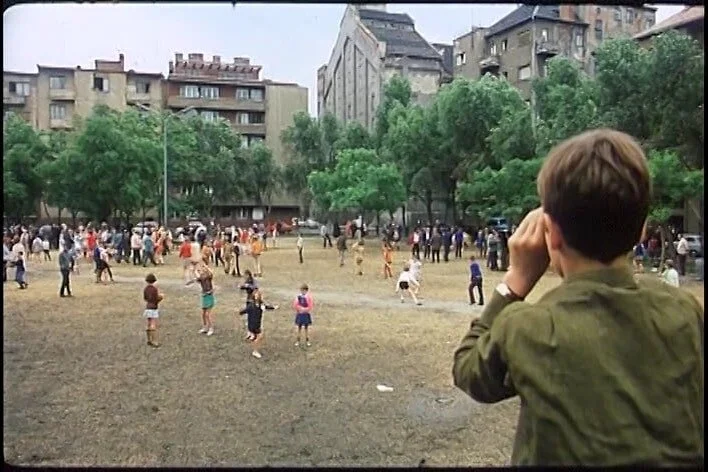
The children’s reasoning: “The picture is so colorful and very lively. And there are so many children and I think that’s just great.”
WORKSHOP RECYCLERS #1: PARIS
FR 2013. D: Nikki Schuster, Antonin Feraud, Yohann Giraudeau, Alexis Godard, Nicole Guyot, Ambre Masson, Anne Mpay, Achylle Pascanet, Aurélien Robert, Sacha Robert, Rémy Verroust. 4 min.
You can go to Paris and see the Eiffel Tower, the Louvre or the Arc de Triomphe. Or you can experience this city differently by looking at the graffiti on the sidewalk, the posters on the walls and all the little things that people have thrown away: Nikki Schuster brings a second kind of life to this city by — in a workshop together with a group of children — animated little creatures, animals and monsters out of Coke cans, pieces of wire, tapes — in other words, all the things that lie around on the street and are neglected by people.
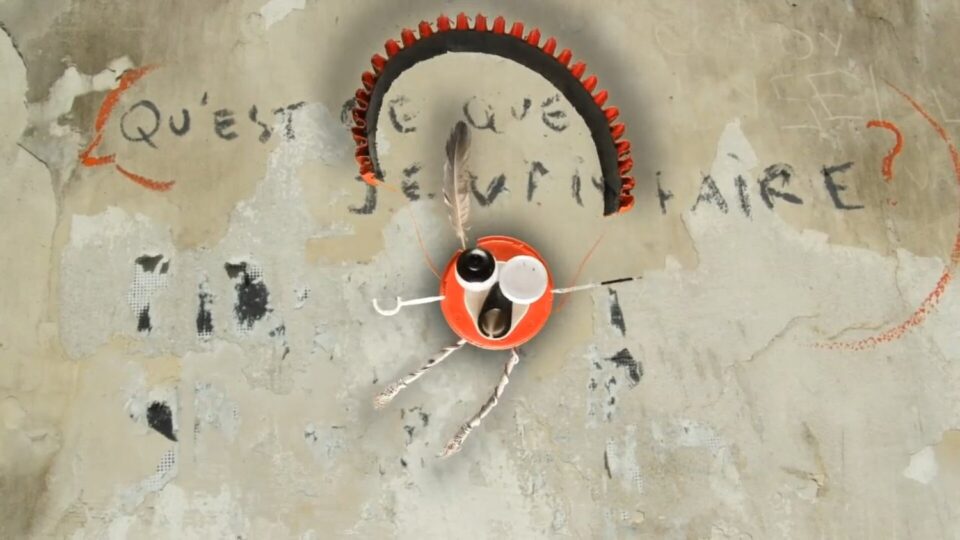
The children’s reasoning: “We thought the robots were cool.”
SALLY
NL 2005. D: Launa Maurer, Roel Wouters. 2 min.
One large and about three dozen small marbles in a white, brightly lit room with a tiled structure. They move from left to right, from front to back and suddenly start to jump, to the right wall, to the ceiling and back down again. Are these marbles really only objects or eyes that can defy the rules of gravity? Do we look up or down, is there even a space and if so, where is it?
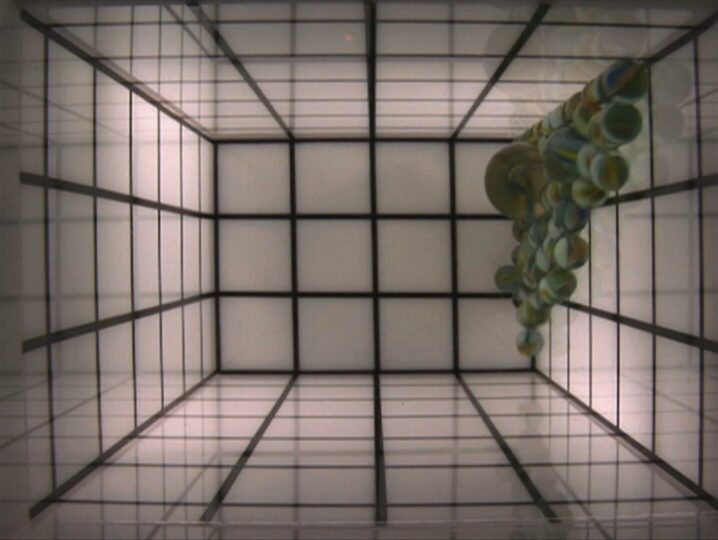
The children’s reasoning: “You can really observe gravity. The movie is even cooler when you know how it was made.”
A VISIT FROM THE SPACE
Posjet iz svemira. YU 1964. D: Zlatko Grgić. 12 min.
A young girl plays in the garden in front of her family’s house. Suddenly a UFO appears. Two aliens get out and after one has fled in fear, the other gets to know the girl and slowly begins to trust her. When she is called to dinner by her parents, the alien remembers his mother, who is waiting on the distant planet from which he came. With the help of the girl’s dragon, the alien manages to return home, leaving a trail of gnawed apples in his wake.
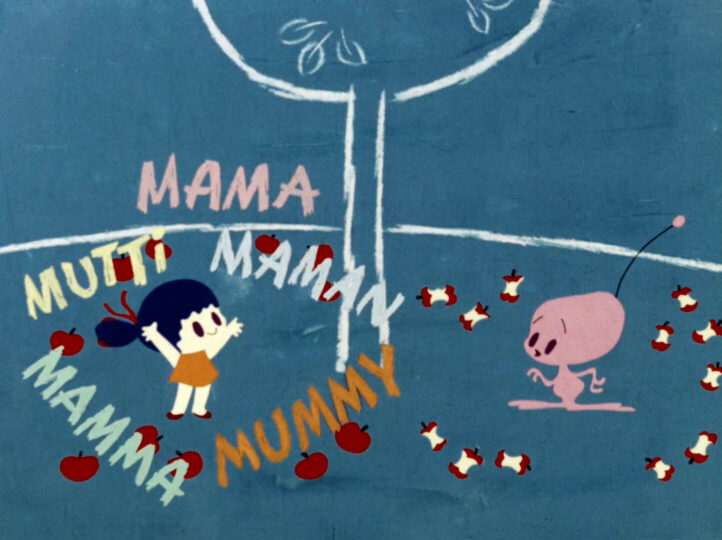
The children’s reasoning: “We chose the movie because the aliens are so funny. The one alien is first afraid to take the apple and then makes his arm really long. I think that’s funny.”
TABLES TURNED ON THE GARDENER
L’Arroseur Arrosé. FR 1895. D: Cinématographe Lumière.
A gardener is watering his plants when the water suddenly stops flowing. When he puts his face to the nozzle to see what could be causing it, the water starts flowing again and splashes him directly in the face. Who is behind the prank? The film was one of the first ten films to be screened publicly by the Lumière brothers and is often described as the first film to use a suspense structure.
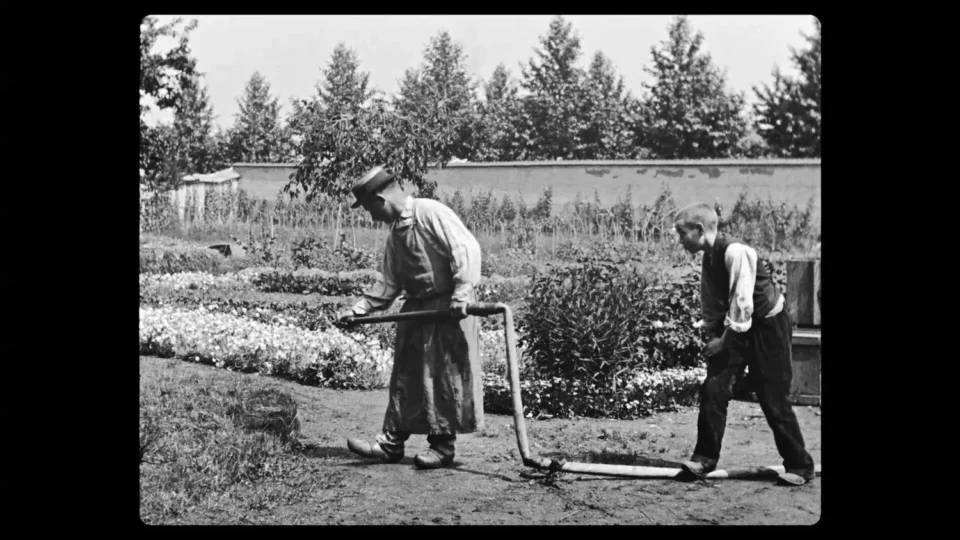
The children’s reasoning: “I think it’s funny that the boy in the picture is standing on the garden hose and the gardener is holding it to his head and letting go — and then the water is splashing in his face.”
